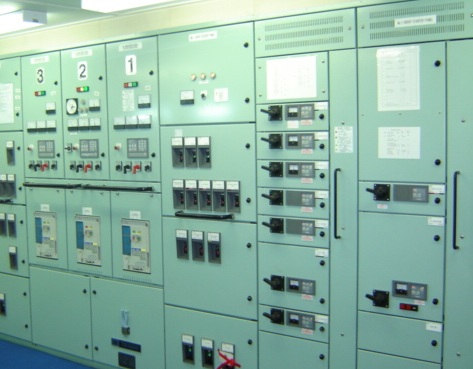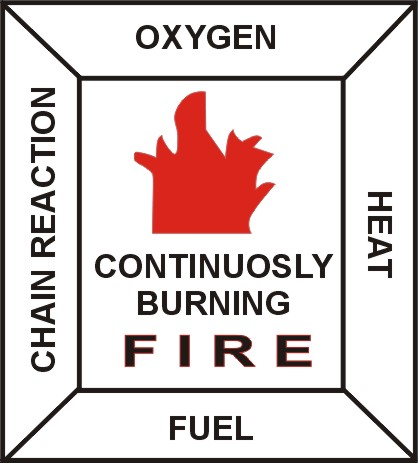What Is The Primary Function Of The Expansion Valv
What Is The Primary Function Of The Expansion Valve In A Refrigeration System?
The Primary Function Of An Expansion Valve In A Refrigeration System Is To Regulate The Flow Of Refrigerant From The H P Side To The L P Side Of The System.
The Pressure Drop Causes The Saturation Temperature To Drop, Enabling It To Boil Off At The Low Temperature Of The Evaporator.
What Is The Function Of An Evaporator In A Refrigeration System?
The Function Of The Evaporator Is To Boil Off The Liquid Refrigerant, At The Same Time Cooling The Air. The Design Of The System And Evaporator Should Be Such That All Liquid Refrigerant Is Boiled Off And The Gas Slightly Superheated Before Returning To The Compressor.
What Is The Function Of The Condenser In A Refrigeration System?
The Function Of A Condenser In A Refrigeration System Is To Condense And Sub Cool The Refrigerant Below Saturation Temperature.
What Would Cause An Excessive High Pressure In A Refrigeration System?
High Pressure Could Be Caused By Lack Of Cooling Or A Fouled Condenser Or Even Overcharge, But This Is Usually Unlikely.
How Do You Purify HFO?
Heavy Fuel Oil Is Purified Using A Centrifugal Separator, Which Operates By The Principle Of Centrifugal Force Separating Two Liquids, In This Case Fuel Oil And Water By Means Of A Cylindrical Interface Between The Two. The Positioning Of This Interface Being Very Important For The Correct Operation.
What Is The Difference Between A Clarifier And A Purifier?
A Purifier Removes Water As Where A Clarifier Removes Solid Impurities.
In Some Cases, Both Are Used For Separation Purposes, Firstly The Oil Is Purified, Then Clarified.
What Is The Regulation Regarding Use Of FWG Inshore?
Evaporators Should Not Be Used Within 20 Miles From Shore, Due To Risk Of Pollutants Being Taken Into The Freshwater System.
How Is 15 Ppm Reached In An Oily Water Separator?
15ppm Is Achieved In An Oily Water Separator By Normally Passing Through A Two Stage Separator Where In The First Stage Oil/Water Is Passed Into The Coarse Separating Compartment. Here Some Oil Will Rise To The Top Of The Compartment Due To Its Lower Density, Heating Coils May Aid This. The Remaining Oil/Water Will Flow Down Into The Fine Separating Compartment And Moves Slowly Between Catch Plates. More Oil Will Separate Out Onto The Underside Of These Plates And Travel Outwards Until Free To Rise To The Oil Collecting Space. The Almost Oil Free Water (usually Being At 100ppm At This Stage) Will Then Pass To The Second Stage Of The Separator, Which Is A Filter Unit Comprising Of Two Filter Units. The First Filter Stage Removes Physical Impurities Present And Promotes Some Fine Separation. The Second Stage Filter Uses Coalescer Inserts To Achieve The Final De-oiling, Oil/Water Mixture Leaving This Stage At Less Than 15ppm.
What Safety Devices Are Fitted To A Start Air Line?
Non Return Valve, Flame Traps/Arrestors, Bursting Discs And Safety Valves.
What Fittings Would You Expect To Find On A Start Air Receiver?
Fittings Found On A Receiver Are: Safety Valve, Fusible Plug, Isolating Valve To Main Air Start System, Filling Valve From Compressor, Drain Valve, Valve To Control Air, Valve To Whistle, Pressure Gauge.
What Are The Safety Devices Fitted To An Air Compressor?
Low Lub Oil Pressure Shut Down
High Air Temperature Shut Down
1st Stage Relief Valve
2nd Stage Relief Valve
A Fusible Plug Is Fitted After The 2nd Stage Cooler, Set At 120°C
If Water Cooled, A Busting Disc Is Fitted.
What Is The Maximum Compressed Air Temperature That Should Leave An Air Compressor?
93°C
What Is The Purpose Of A Fusible Plug On An Air Receiver And At What Temperature Is It Designed To Melt?
The Purpose Of The Fusible Plug Is To Act As A Safety Feature To Release Compressed Air From The Receiver In The Event Of A Fire In The Vicinity. The Fusible Plug Is Designed To Melt At 150°C.
Explain How You Would Start An Air Compressor And Stop It (after Overhaul)
Check Oil Level In Crankcase.
Then Ensure All Drains Are Open, I.e. Intercooler Drains And Also Unloaders.
Check Air Intake Filter Is Clean.
Ensure Oil Pressure Gauge Is Open And That Air Pressure Gauges I.e. 1st And 2nd Stage, Are Partially Open To Stop Gauge Fluctuation.
If Water Cooled, Check Valves Are Open And Cooling Is Supplied. Also Check Header Tank.
Bar Machine Over By Hand To See If It Is Free To Turn.
Start The Machine, Check There Are No Unusual Noises Or Vibrations And Oil Pressure Is Correct.
Then Close Drains And Unloader.
If All Seem Okay, Run For 30 Minutes, After Which, It Can Be Stopped, Covers Removed And Bearings Checked. If Okay Machine Can Be Started On Automatic And Run.
To Stop The Machine, Always Make Sure The Machine Is Unloaded And Drains Opened Before Stopping, Unless Automatic Drains And Unloaders Are Fitted.
Name The Two Most Common Types Of Coolers Used On Board?
Shell And Plate Type Coolers
Shell Being Where A Tube Stack Is Used And Fitted Into A Shell And Closed At Either End With End Covers.
Plate Type Being Made Up Of A Number Of Pressed Plates Surrounded By Seals And Held Together In A Frame.
How Do You Start Up, And Parallel A Generator?
First Check Engine Oil Levels, Such As Lub Oil Sump, T/C Oil Level, Governor Oil Level, Rocker Arm Bank Oil Level (if Fitted).
Check Jacket Water Header Tank Level
Ensure Indicator Cocks Are Open, Start Lub Oil Priming Pump Then Bar Engine Over (ensure Turning Bar Is Removed).
Kick Engine On Air. Close Indicator Cocks.
Start The Engine.
Check All Parameters Are Correct: Lub Oil Pressure/Temperature, Jacket Water Temperature/Pressure, Check Sea Water Cooling Pressure And Rocker Arm Lub Oil Pressure.
Allow Engine To Warm Up And When Satisfied That Everything Is Okay, Engine May Be Paralleled As Follows:
Ensure The Voltage Of The Machine To Be Paralleled Is The Same As The Bus-bar Voltage. Ensure The Frequencies Of Both Machines Are The Same (the Frequency Of The Incoming Machine Can Be Adjusted Using The Speed Control).
Select The Machine To Be Paralleled On The Synchroscope Selector.
The Synchroscope Should Then Start To Rotate, It Should Be Rotating In A Clockwise Direction Slowly. If It Is Rotating In An Anti-clockwise Direction, This Means The Speed Of The Incoming Machine Is Too Slow Or If It Is Rotating Fast Clockwise, The Speed Of The Incoming Machine Is Too Fast, This Is Adjusted Using The Speed Control.
When The Needle Of The Synchroscope Is Rotating In The Clockwise Direction Slowly, The Breaker Of The Incoming Machine Should Be Closed. When The Needle Of The Synchroscope Is At The Five To Twelve Position, This Will Allow The Incoming Machine To Take A Slight Amount Of Load When Coming On The Switchboard And Also Prevent The Machine Tripping On Reverse Power.
The Load Is Then Shared Equally Between Both Machines.
What Is The Purpose Of Rocker Gear On An Engine?
The Purpose Of The Rocker Gear Is To Operate The Inlet And Exhaust Valves On The Cylinder Head.
What Trips Are There On A Generator?
The Trips On A Generator Are: Lub Oil Low Pressure Shut Down, Jacket Water High Temperature, Overspeed Shut Down.










